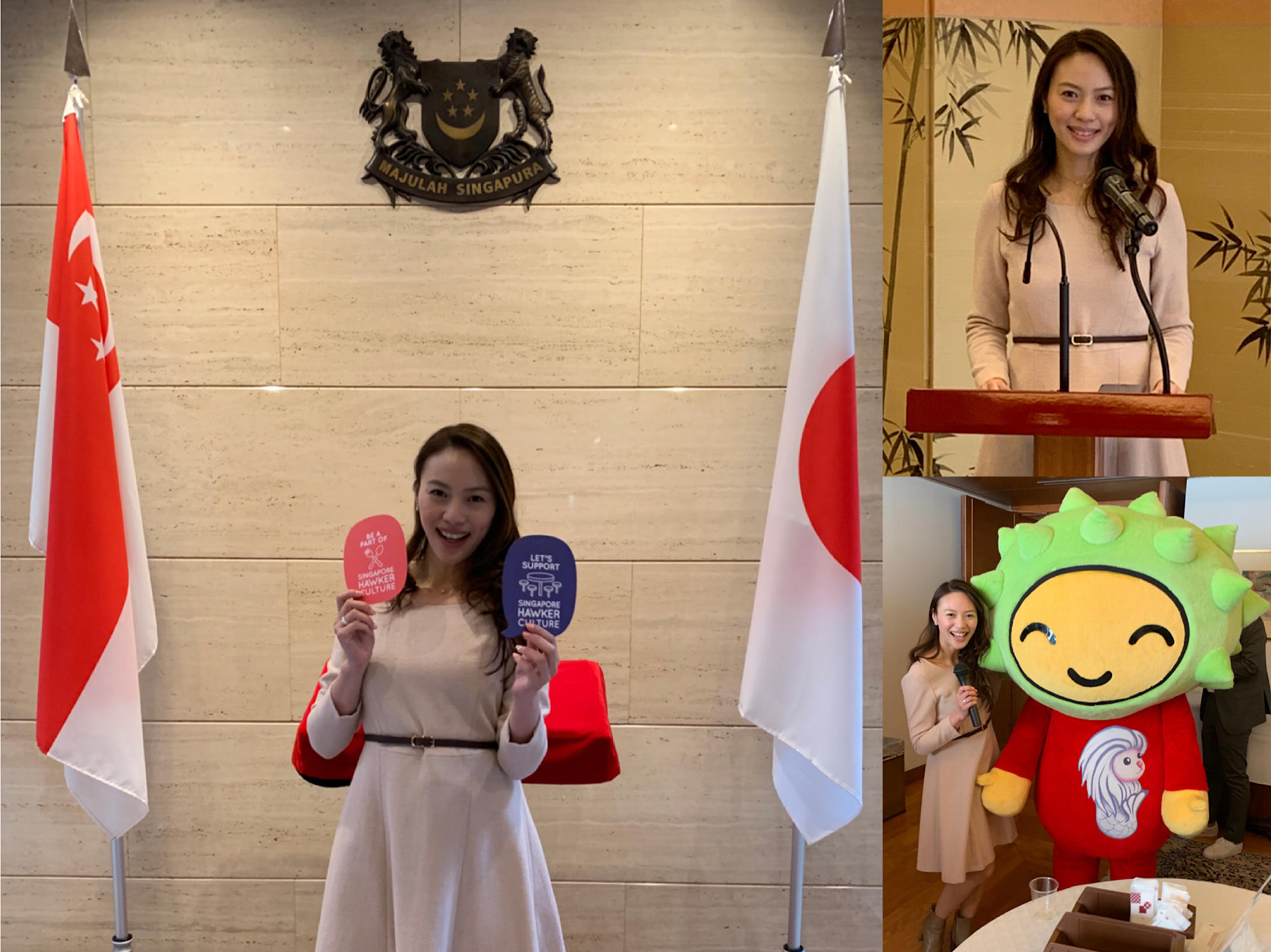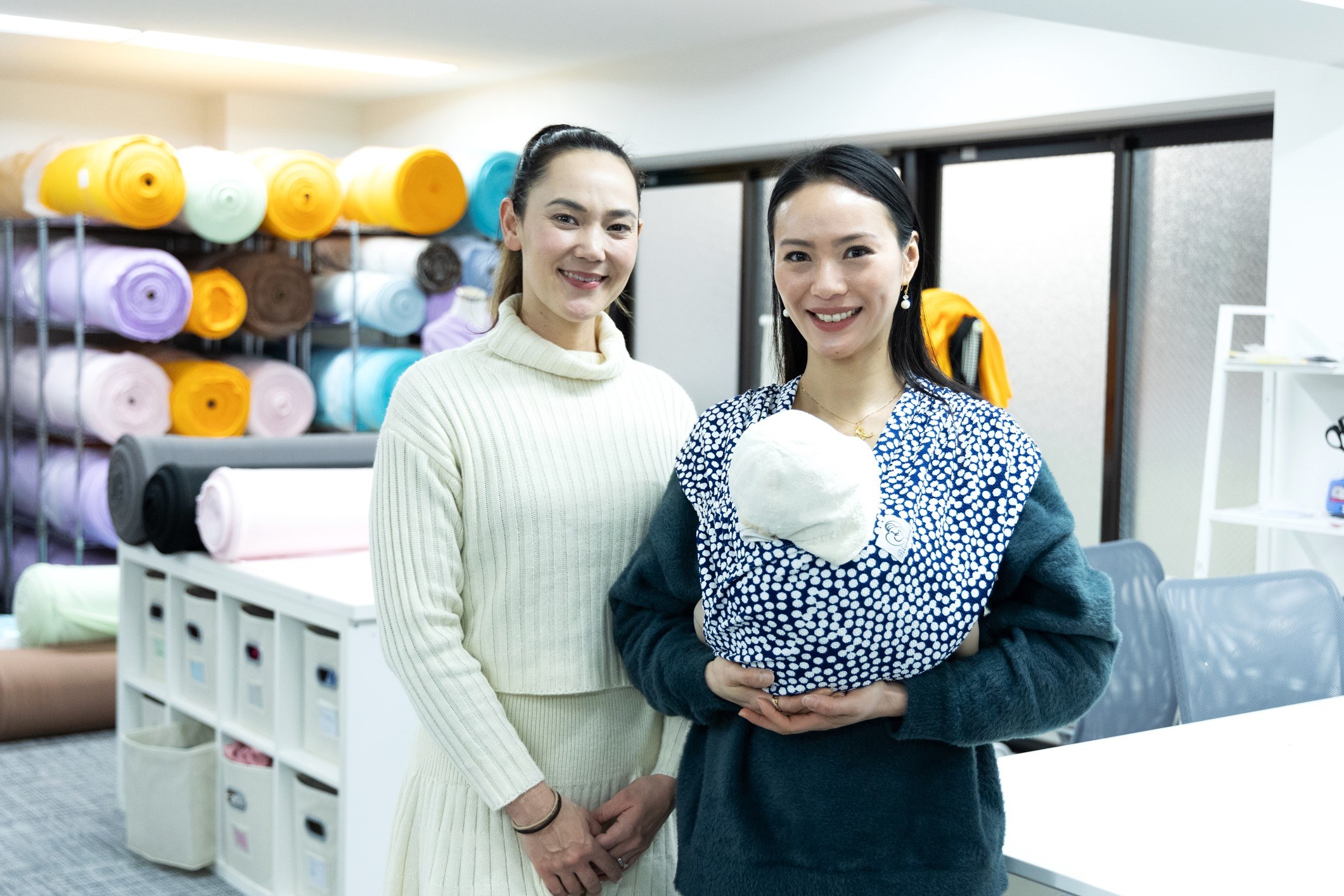Spring is upon us with flowers in full bloom.
Did you know that although Chinese New Year celebrations were in February, the holiday is also called “Spring Festival” to celebrate the start of the Spring season?
春には花が咲き誇ります。
中国の新年のお祝いは2月に行われましたが、この祝祭日は春の始まりを祝うために「春祭り」とも呼ばれます。
Since I arrived in Tokyo, I have hosted as emcee of the annual Spring Festival luncheon at the Singapore Embassy in Tokyo (organized by SAIJ) to share Singapore’s tradition of Chinese New Year celebrations with fellow Singaporean’s and also the local Japanese community.
Click here to read about last year’s event.
今年の「猪の年」は2019年2月5日に始まりました。私は来日してから、シンガポール大使館で毎年行われる春祭りの昼食会の司会者として、シンガポールの旧正月の祝賀会を同僚のシンガポール人や地元の日本人コミュニティと一緒に楽しむために、つとめています。
ここをクリックして、昨年の旧正月イベントについてもぜひご覧ください。
Today I will share about Singapore’s Chinese New Year customs and this year’s Spring Festival Luncheon event!
今回はシンガポールの旧正月習慣と2019年の「春節の昼食会」について書きましたので、ぜひご覧くださいね!

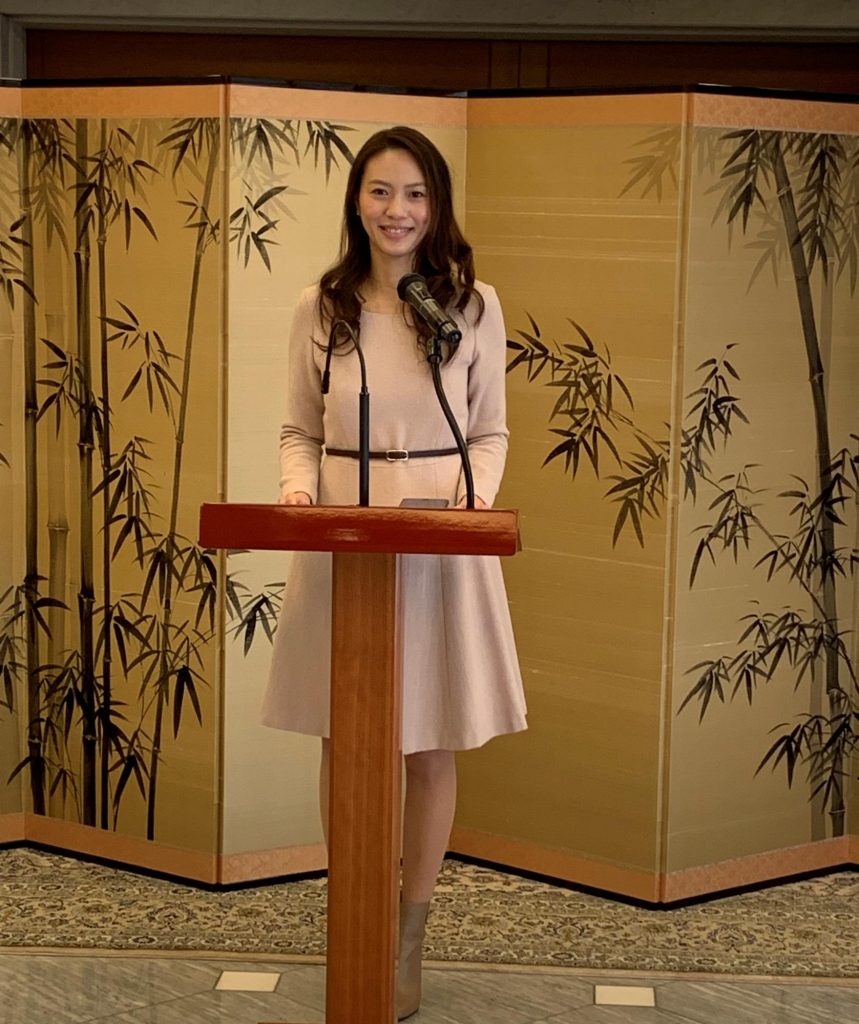
Happy to be emcee for the 2019 Spring Festival Luncheon at the Singapore Embassy!
シンガポール大使館での2019年春祭り昼食会で司会をすることを嬉しく思います!
*~*~*~*
Singapore’s Chinese New Year
シンガポールの旧正月
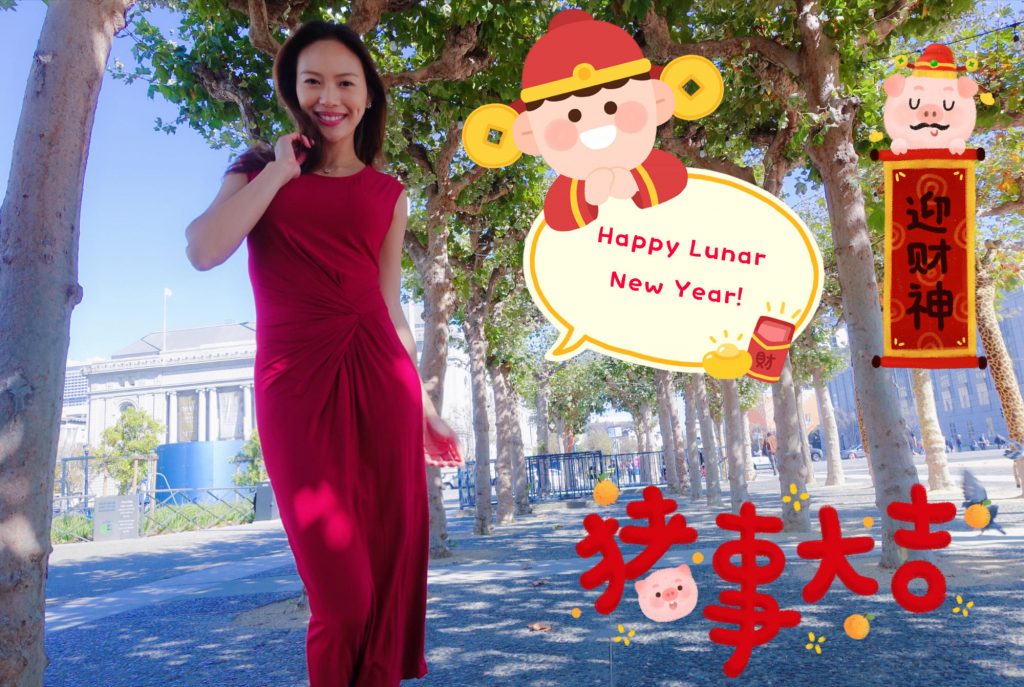
As Singapore’s population consists of over 70% Chinese ethnically, Chinese New Year (also called the Lunar New Year or Spring Festival) is one of the country’s most important national holidays and celebrated grandly. Let me introduce some Singaporean customs and cuisines today! Although many of these customs and foods may have originated from China, they have evolved in unique ways and are significantly different on the island of Singapore.
中華系住民が人口7割以上を占めるシンガポールでは、旧歴のお正月(または、春節)は国の最も重要な祝祭日の1つであり、盛大に祝います。 今日はシンガポールの旧正月習慣やお料理のいくつかご紹介したいと思います。これらの習慣や食べ物の多くは中国から生まれたものかもしれませんが、それらは独自の方法で進化してきており、シンガポールの島では中国とはかなり異なっています。
囍
Incidentally, my birthday often coincides with the start of the Lunar New Year, and so is usually overwhelmed by Spring Festival celebrations. This year is a perfect example – Lunar New Year began on February 5th and my birthday is the next day on February 6th. Nonetheless, double celebration makes for double happiness, as the auspicious Chinese saying goes! Chinese culture believes that “happiness comes in twos” (好事要成双, hǎoshì yào chéng shuāng), forming the basis of the auspicious characters such as 囍 (xǐ), which is often called shuāngxǐ or “double ‘xi’” because it is double the character of 喜 (xǐ) for “happiness” or “joy”.
因みに、私の誕生日はしばしば旧正月と一致するため、春祭りのお祝いと一緒にされてしまいます。今年は真にその通りでした。旧正月は2月5日に始まり、私の誕生日はその翌日の2月6日です。 それにもかかわらず、縁起の良い中国の格言で言われるように、二重のお祝いは二重の幸福をもたらします! 中国文化は、「幸福は2つになる」(好事要成双、hǎoshìyàochéngshuāng)と考えています。これは、囍(xǐ)などの縁起の良い文字の基礎に成るもので、「double happiness」のshuāngxǐまたは「double ‘xi’」とよく呼ばれます。 「幸せ」または「喜び」のための喜(xǐ)の2倍の文字です。
*~*~*~*
Mandarin Oranges & New Years Greetings
みかんと新年のご挨拶の由来
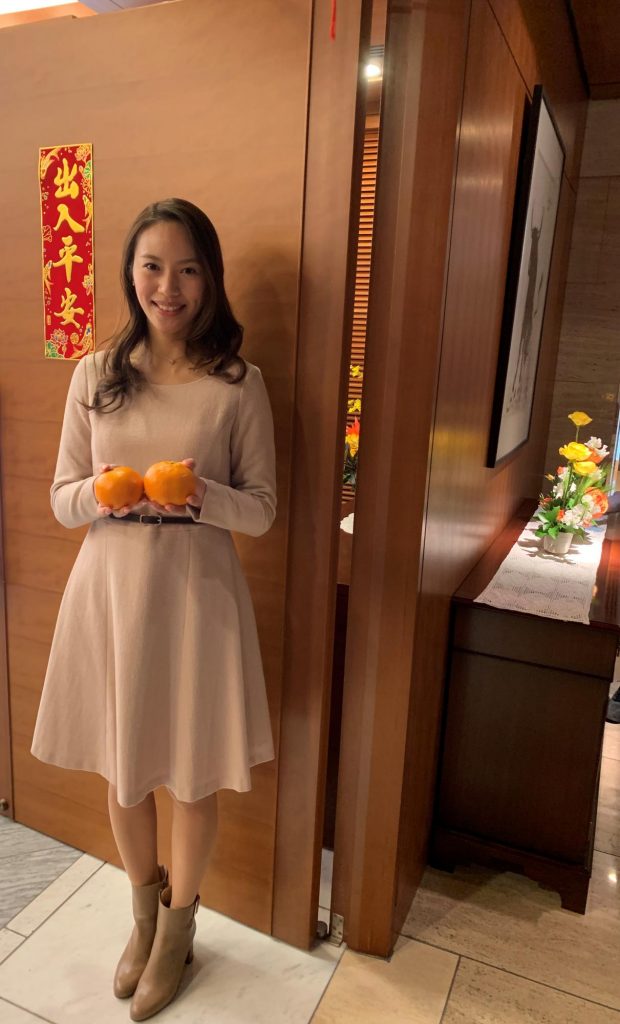
Firstly, mandarin oranges are very important for Chinese New Year celebrations.
During Chinese New Year, each family will head out to visit relatives who are higher in patriarchal status. For example, a family will visit their parents, uncles and aunts, and elders.
まずは、新年を祝う時に欠かせないのが、蜜柑。
旧正月の間、各家族は家父長制の地位が高い親戚を訪問します。 たとえば、家族は両親、叔父と叔母、そして祖父母を訪問します。
During these visits, each member of the visiting family gives two mandarin oranges as he or she conveys New Year greetings to the heads of household. Those who receive the oranges would usually give two other oranges back in exchange; and at the same time, they would give red packets (with money inside) to every unmarried member in the visiting party. The head of household of the visiting family will reciprocate by giving red packets to any member of the family who is not yet married. It was so much fun as a child to exchange oranges and collect these red packets and extra pocket money during the holidays!
これらの訪問の間に、訪問している家族の皆は、新年の挨拶を伝えるときに2つの蜜柑を与えます。蜜柑を受け取った人は、通常、自分の蜜柑と引き換えに相手に返します。 そして同時に、彼らは訪問している家族のすべての未婚の皆さんに中にお金を入れている赤い袋をあげます。(これは日本のお年玉と同じです。) 訪問している家族の世帯主は、まだ結婚していない家族に赤い包みを与えたりもらったりします。私は、子供の頃、蜜柑を交換して、休暇中にこれらの赤い袋の小遣いをいただくのはとても楽しかったですよ!

| Some New Year’s greetings when gifting mandarin oranges include: みかんを贈るときの新年のご挨拶の例: 新年快乐 (Happy New Year、明けましておめでとうございます) 春节快乐 (Happy Spring Festival、春節明けましておめでとうございます) 吉祥如意 (Good fortune according to your wishes、良いお年になりますように) 年年有余 (Surplus year-after-year、ますます栄えますように) 心想事成 (May all your wishes come true、お願いがすべて叶いますように) 大吉大利 (Lots of luck and profits、たくさんの運に恵まれますように). There are countless greetings you can use. Click here to some others here. |
Why Mandarin Oranges?
なんで蜜柑(マンダリンオレンジ)でしょうか?
There are many theories as to why mandarin oranges are an important symbol during Chinese New Year, used not only as decorations but as gifts when visiting family and friends to represent the sharing abundance and good fortune.
みかんがなぜ新年の間に重要な象徴であるかに関して多くの「謂れ」があります。それは装飾としてだけでなく、皆の豊かさと幸運を表すために家族や友人宅を訪問するときの贈り物としても使われます。
Some say that the small citrus looks like the sun, and because the sun is aligned with the yang (positive) principle, it is a symbol of abundance and happiness. The orange hue of these fruits also symbolizes “gold”, hence its auspiciousness warrants its presence at home.
小さな柑橘類は太陽のように見え、太陽は陽(陽)の原理に沿っているため、豊かさと幸福の象徴であると言う人もいます。 これらの果物のオレンジ色は「金」を象徴しているので、その縁起の良さが自宅での繁栄のシンボルとされます。
Another popular theory says that the word for mandarin—kam—sounds similar to the word for “gold” in the Cantonese dialect. Others say it sounds similar to the word “luck” (tangerine) and “wealth” (orange), when spoken in Mandarin. Regardless of the specific theory, it is believed that having mandarin oranges around the home during the New Year will bring riches into your life.
もう1つの「謂れ」は、広東語の方言の「金」の発音とみかんの発音kamが同じであるということです。 他の人はそれを中国語で話されたとき、「運」(みかん)と「富」(オレンジ)という言葉に似ているように聞こえると言います。 具体的な「謂れ」に関係なく、新年の間に家の周りみかんを置いておくことは人生に富をもたらすと言われています。
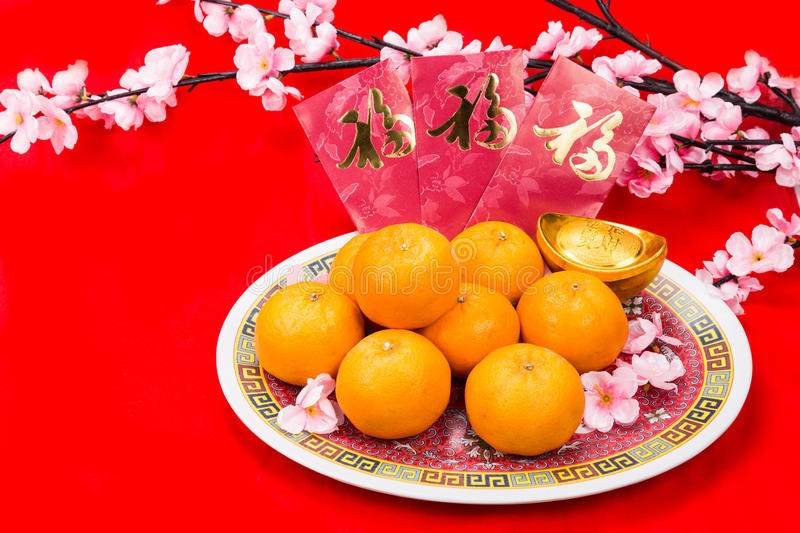
*~*~*~*
Spring Festival Lunch
春節のランチ
We started off the lunch with the tradition of Yusheng or Lohei!
YushengまたはLoheiという伝統料理でランチが始まりました!
※Yushengは日本のおせち料理のように、意味のある食べ物です。
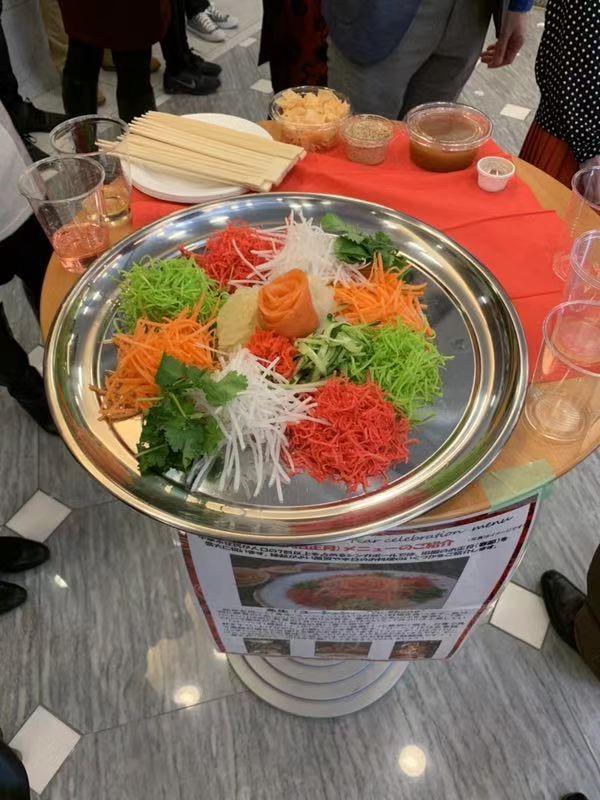
Learn more about this dish unique to Singapore’s Chinese New Year celebrations in my previous post: https://rachelleng.com/spring-luncheon-at-singapore-embassy-in-tokyo/
If you are interested in local Singaporean food, click here to read my post on Peranakan or Nonya Cuisine:
シンガポール料理に興味があるなら、PeranakanまたはNonya料理についてここをクリックしてご覧くださいね!
*~*~*~*
Singapore’s Hawker Culture
シンガポールのホーカー文化
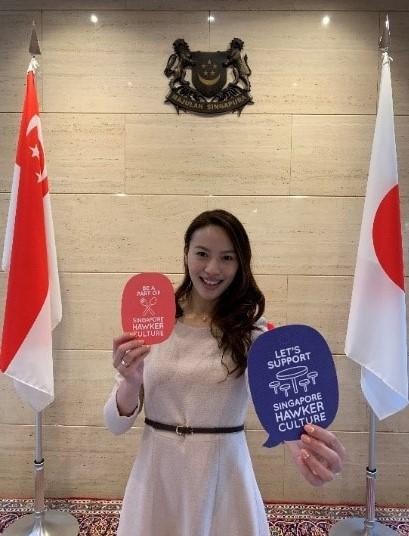
If you visit Singapore, you cannot miss out on the opportunity to eat at our local food stalls and have some “hawker food”! There are foods of all kinds, from seafood and chicken rice to local snacks and desserts at cheap prices! Each hawker has its own unique flavor.
Some of my favorite hawker foods include Otak-Otak and Bak Kut Teh.
シンガポールを訪れたら、わざわざ行きたい屋台料理街、Hawkers「ホーカーズ」。地元民に親しまれる屋台街では、多くの食べ物 (シーフード・チキンライス・ローカルなおやつやスイーツなど)が、安い値段で提供されていて、お店によって味が違うのも魅力です。
そんな屋台料理の中から、私の好きな料理はOtak-Otak (オタオタ:魚のすり身を唐辛子や香辛料で味付けし、バナナリーフで包んで蒸す)とBak Kut Teh(バクテー:マレーシア及びシンガポールの鍋料理)です。
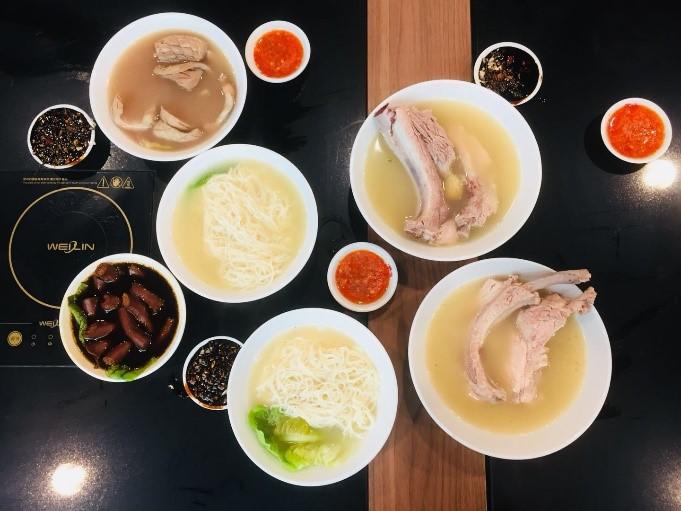
Read more on some local Singaporean foods featured in previous events with the Singapore Embassy: https://rachelleng.com/singapore-new-years-event/
シンガポール大使館での以前のイベントでは、他の地元のシンガポール料理も紹介されていました。上のリンクをクリックしてご覧ください!
Singapore’s hawker culture has recently been nominated for inscription into UNESCO’s Representative List of the Intangible Cultural Heritage of Humanity. The Singapore Embassy in Tokyo provided an opportunity for all visitors to demonstrate their support for the bid. If successful, this would be Singapore’s second UNESCO site – the Singapore Botanic Gardens became the island’s first UNESCO World Heritage Site when it was inscribed in 2015.
シンガポールのホーカー文化は、ユネスコの代表的無形文化遺産に登録されています。 東京のシンガポール大使館は、訪問者のアンケートによる投票が行われます。 成功すれば、これはシンガポールの2番目のユネスコ世界遺産になります!シンガポール植物園は、2015年に島で最初のユネスコ世界遺産になりました。
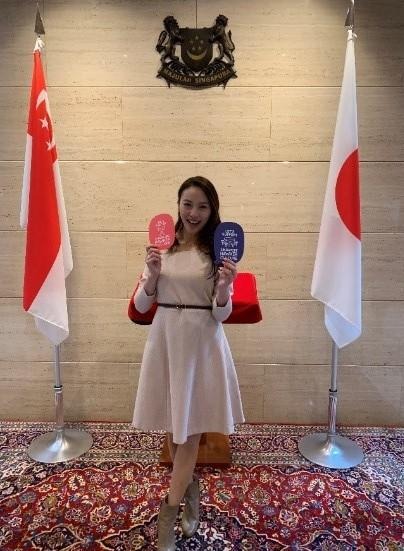
| Did you know? Singapore’s hawkers started out as migrants who peddled their food on streets and sidewalks. They were moved into special facilities by the Government from the 1970s. Every day, more than 6,000 hawkers produce an assortment of mouth-watering dishes at about 110 hawker centers in present-day Singapore. *** ご存知でしょうか? シンガポールの屋台文化は、路上や歩道で食べ物を売っていた行商人たちから始まりました。 それらは1970年代から政府によって特別な施設に移されました。 今日、シンガポールの約110のホーカーセンターで、毎日6,000人以上の屋台人たちが美味しい料理を作っています。 |
*~*~*~*
Special Guest: Dori-Tan!
スペシャルゲスト:ドリたん!
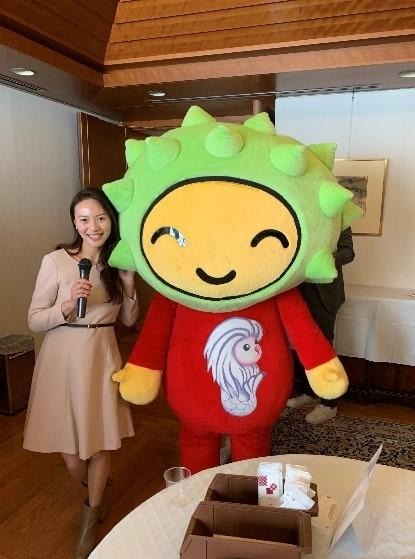
A special guest also graced our event!
Have any of you met Dori-tan before?
To commemorate the 50th anniversary of Japan-Singapore relations in 2016, Japanese mascot, Hello Kitty and Singapore mascot, Dori-tan, were revealed.
The Hello Kitty mascot symbolises the character of “Cool Japan” while Dori-tan represents a five-year-old Singaporean boy who used to live with his family in Japan. Dori-tan is inspired by Singapore’s iconic Merlion and the King of Fruits, the Durian!
皆様、ドリたんを知っていますか?
シンガポール大使館のイベントで特別ゲストが登場しました!
2016年の日本・シンガポール交流50周年を記念して、日本のマスコット「ハローキティ」とシンガポールのマスコット「ドリたん」が公開されました。
ハローキティのマスコットは「クールジャパン」のキャラクターを象徴し、ドリたんは5歳のシンガポールの男の子で、日本で家族と暮らしていました。 ドリたんは、シンガポールの象徴的なマーライオンとフルーツ王、ドリアンの影響を受けています。
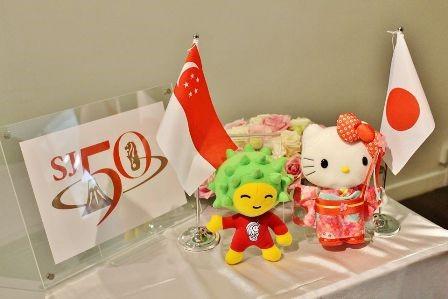
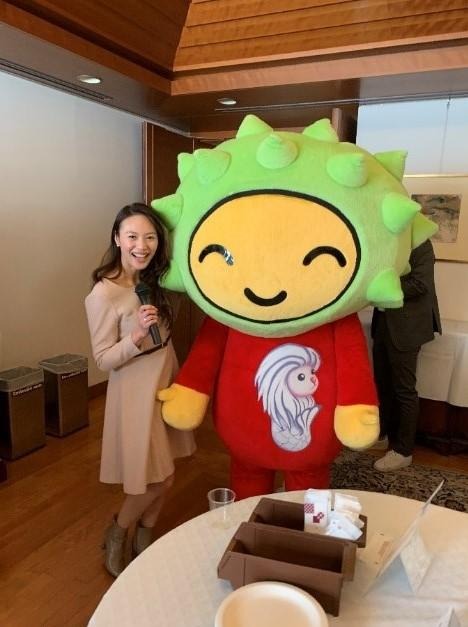
Dori-tan at our event!
Apparently, his idol is the Merlion and he loves eating durian.
He also likes Japanese anime, and his hobbies are music and dance. Isn’t he adorable?
ドリたんが登場!
好きなものはドリアンと日本のアニメ。アイドルはマーライオン!
音楽やダンスも好きらしいですよ~
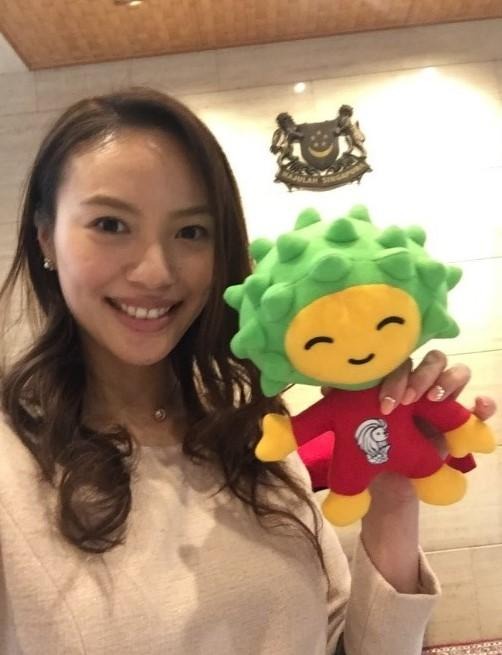
There was even a Dori-tan plush toy!
ドリたんのぬいぐるみもありましたよ~!
可愛いでしょうー!
*~*~*~*
Last Greetings
最後のご挨拶
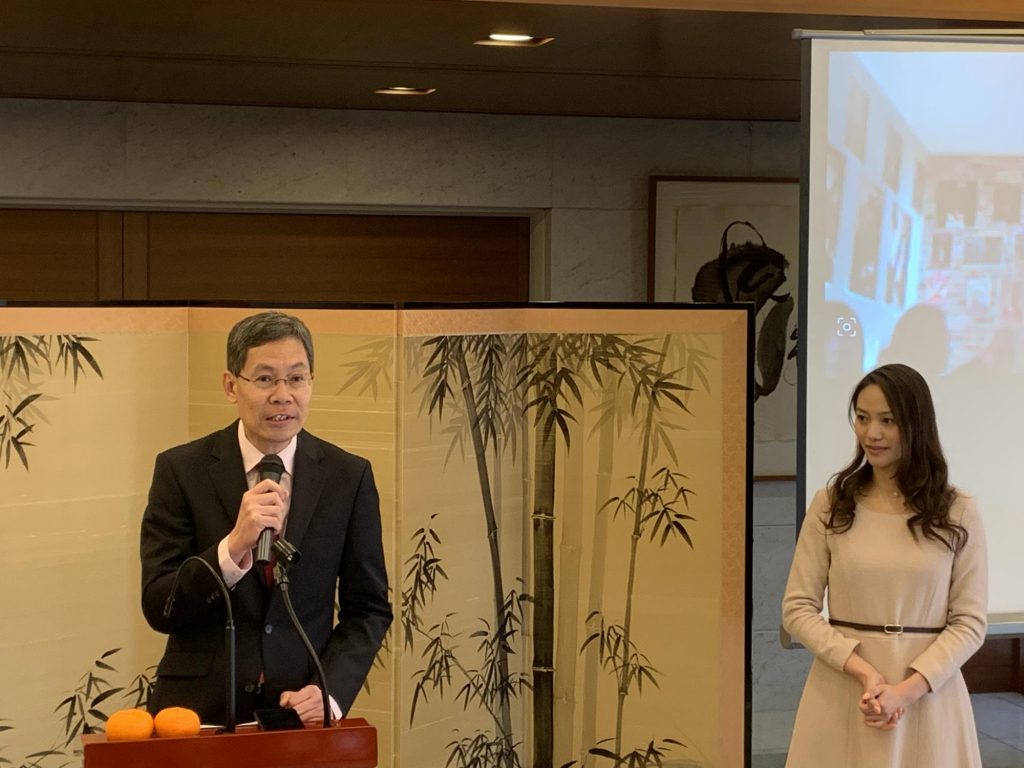
The event ended with some final remarks from the current Singapore Ambassador to Tokyo, Ambassador Lui, as well as raffle prizes being given out to winners.
イベントはシンガポール大の使(Ambassador Lui)からの最後のご挨拶で始まり、そして受賞者に授与されるラッフル賞で終了しました。
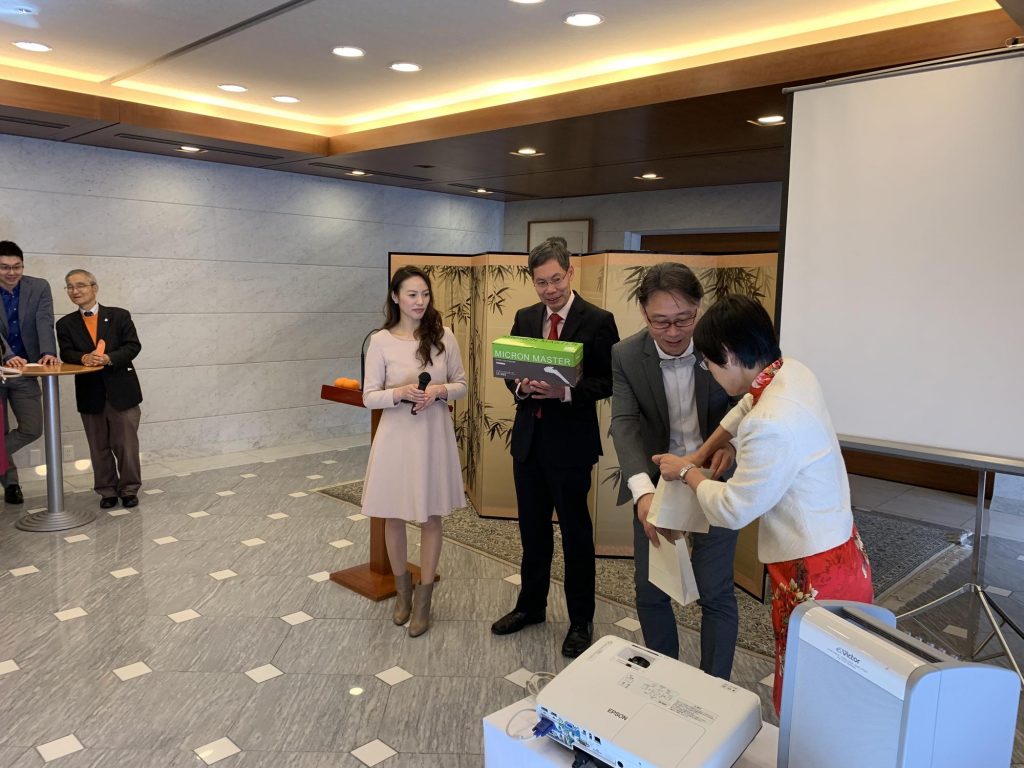
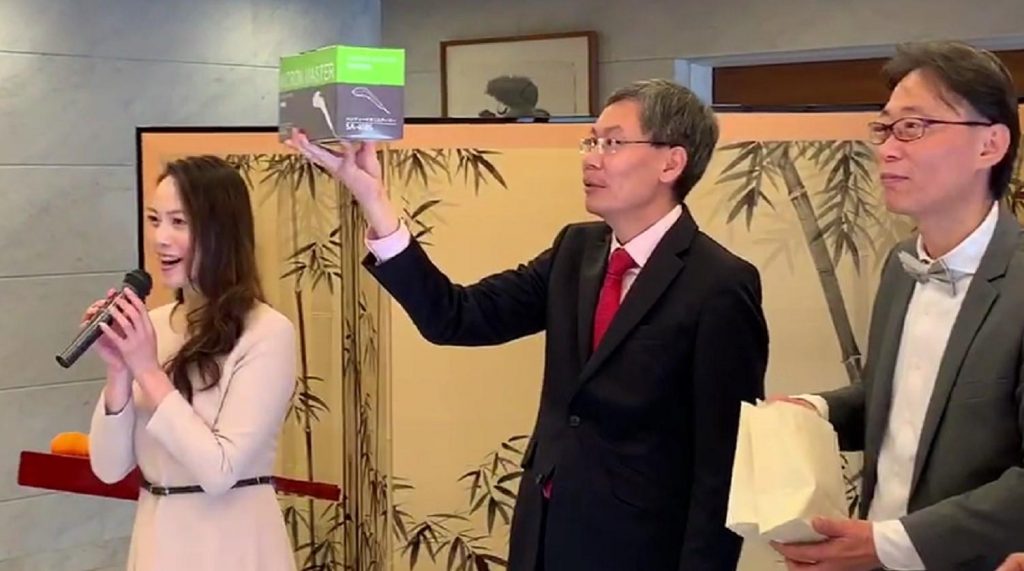
I had a great time at the Spring Festival Luncheon!
It is nice for the Singaporean Association in Japan (SAIJ) to organize an event at the embassy, providing the Singaporean community a chance to gather and spend meaningful time together even when we are so far away from home. It is also such a delight to be able to share about my country and culture with others! I had a lot of fun teaching people how to eat Yusheng and Lohei properly.
I was not able to go home this Sping Festival and Chinese New Year, so I very much appreciated the festive spirit here in Tokyo, even if it was only for one day. Of course, having Singapore food also brings back many nostalgic memories. Singapore is a small country, but certainly has its own unique customs, cuisine, and way of life.
春節の昼食会で素晴らしい時間を過ごしました!在日シンガポール協会(SAIJ)が大使館でイベントを開催し、故郷から離れた場所でも有意義な時間を一緒に過ごし、シンガポールのコミュニティに交流する機会を提供していただいて感謝しています。 それに、私の国や文化について他の人達と分かち合うことができてとてもうれしいです。 人々にYushengとLoheiの正しい食べ方を伝えるのはとても楽しいことでした。
今年の春節は家に帰ることができなかったので、東京に居ても、たとえそれが一日だけだったとしても、春節を祝うことができたのは、とても幸せでした。 もちろん、シンガポール料理を食べることは、多くの懐かしい思い出をもたらしました。 シンガポールは小さな国ですが、確かに独自の習慣や料理、そして地元の生き方があります。
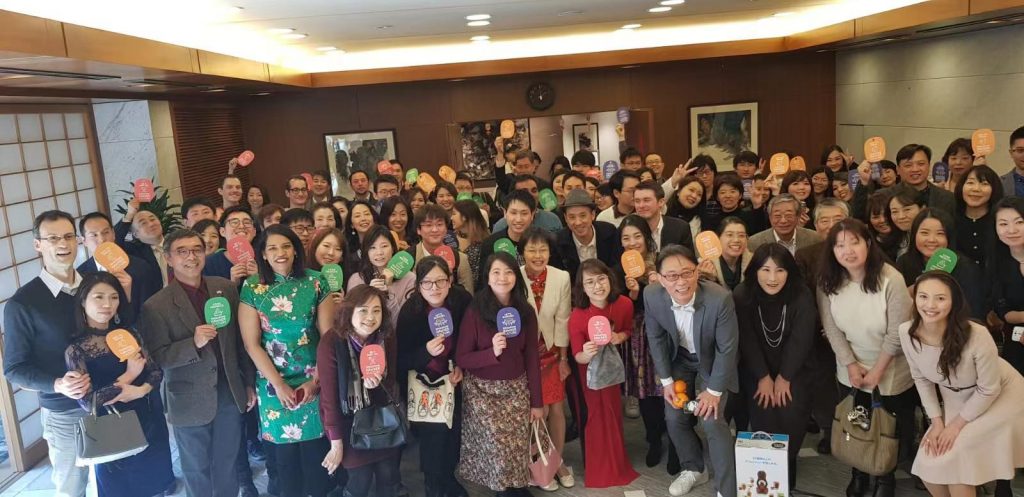
All in all, the beginning of this year has gone off to a great start with fun events and fulfilling moments! I feel grateful to all the kind people around me and look forward to the future!
今年の春は楽しいイベントや充実した瞬間で素晴らしいスタートを切りました!周りのすべての親切な人々に感謝し、将来を楽しみにしています!
*~*~*~*

Embassy of the Republic of Singapore in Tokyo: https://www.mfa.gov.sg/tokyo/

The Singapore Association in Japan (SAiJ): https://www.facebook.com/SAiJofficial

